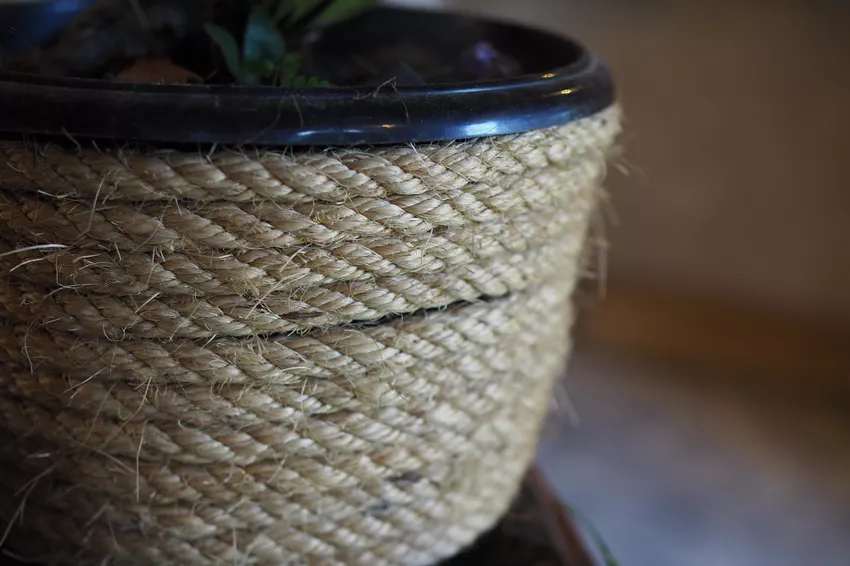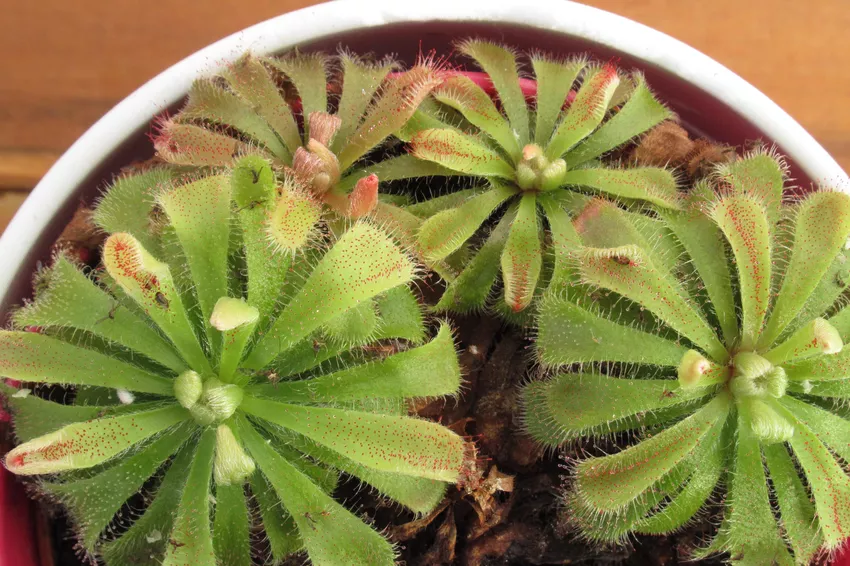Carnivorous plants are a real eye-catcher - but they become even more special in a self-made flower pot made of sisal. You can find out how to make the decorative pot yourself here.

Venus Flytrap (Dionaea muscipula), Sundew (Drosera) or Pitcher Plant (Nepenthes) - Carnivores are extremely popular as indoor plants and quickly turn out to be eye-catchers in the home with their bizarre appearance. In order to put the carnivorous plants in the limelight, you should also pay particular attention to the right flower pot. Unfortunately, the carnivores are often bought in a plastic pot that is not very decorative, which does not fit well into the home as an elegant planter. If you don't want to go without a decorative flower pot for your carnivorous plants or dispose of the plastic pot you bought, you should upcycle the flower pot: With a little sisal and a little handicraft work, a boring plastic flower pot can be turned into an individual eye-catcher for the carnivorous plants.
How-to: Upcycle Sisal Flower Pots for Carnivores
Turning an old flowerpot into a pretty eye-catcher isn't difficult at all. When upcycling flower pots, old plastic flower pots shine like new. In addition, you can find almost all the materials for this in the household.
You need:
1. Plastic flowerpot
2. Sisal rope ( alternatively other ropes)3. All-purpose glue
4. Acrylic paintNow the handicraft work can begin. Since the plastic flower pots are often slightly thicker or protrude at the top edge, the first row is glued separately. To do this, one end of the rope is cut to the correct length so that it fits exactly once around the flower pot. Then it is glued once around the pot with all-purpose glue. The rest of the pot can be circumnavigated with a connected rope. In order for this to succeed, the end of the rope is attached with glue directly under the previously attached row. Now some glue is applied at certain points and the rope is wrapped around the flower pot piece by piece and thus fastened. It's best to goslowly row by row.

Having reached the end of the flower pot, the rope is cut to fit again and the resulting end is carefully attached with all-purpose glue. Now it's time to wait - so that everything sticks well, the glue should have enough time to dry sufficiently. If you like your sisal flower pots rustic and natural, you are already done with the flower pot upcycling after this step. Alternatively, you can also decorate your flower pot individually with acrylic paint when upcycling. Large color blocks in white or other muted colors look particularly stylish and elegant. Here, too, the paint should first dry well before the flower pot moves to its new place after upcycling. When placing the new sisal flower pot, it is important to remember that a saucer is required for the pot. Since the plastic plant pots have drainage holes for excess water and carnivores often have to be watered with low-calcium water, a small flood can otherwise occur on the windowsill at home.
Which carnivores are suitable for sisal flower pots?
Carnivorous plants are popular houseplants because their impressive trapping strategy and unusual appearance attract everyone's attention. Unfortunately, not all insectivorous plants are suitable for growing in sisal pots: pitcher plants in particular (Nepenthes) are rather unsuitable for pot culture, since they usually require a humidity of 80 to 100%, which can only be kept constant in the terrarium.

More robust, however, are the sundew (Drosera), butterwort (Pinguicula vulgaris) and some pitcher plant species ( Sarracenia), because they can also thrive in low humidity. Of course, the popular Venus flytrap (Dionaea muscipula) can also be cultivated wonderfully in sisal flower pots.
The right soil for carnivorous plants
Carnivorous plants are a real feast for the eyes - especially when they shine stylishly in the new flower pot, which has been created by upcycling the planter. So that you can enjoy your carnivores for a long time, it is particularly important not only to use a pretty flower pot, but also to use the right substrate. Regular potting soil is for the insectivorousIt's a nightmare for plants: They prefer slightly acidic soil with a high water storage capacity and a low concentration of nutrients. Special carnivore soils - such as Floragard special soil for carnivorous plants - best meet these requirements and thus ensure that the new roommates can develop splendidly.
"Especially when buying new plants, you should repot the carnivores, as it is usually not known how old the soil is. If the carnivores have a good substrate in addition to a pretty flower pot, they only have to be properly cared for. In our article “Carnivorous houseplants: 6 fly eaters for indoors”, we will tell you what to look out for.

Many thanks to Floragard for the support!